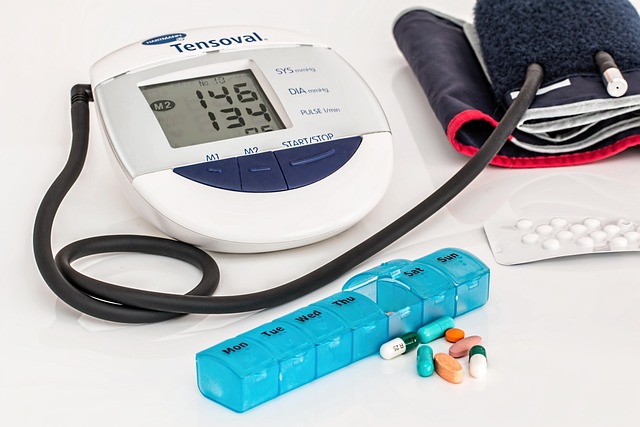Nighttime Nocturia and Daytime Urgency: Interpreting Overactive Bladder Signs
Waking multiple times at night to urinate and feeling sudden daytime urgency can be disruptive and confusing. Understanding what these patterns mean, how they differ from other urinary issues, and when to seek evaluation helps you make sense of symptoms and explore practical steps that improve sleep, comfort, and daily confidence.

Nighttime trips to the bathroom and abrupt urges during the day are common complaints but not always easy to interpret. Nocturia—waking from sleep to urinate—and urgency with or without leakage can signal overactive bladder (OAB), yet they may also reflect fluid habits, medications, or other medical conditions. Knowing the core signs, typical causes, and evidence-based options helps you discuss the right next steps with a clinician and tailor changes that fit your routine.
This article is for informational purposes only and should not be considered medical advice. Please consult a qualified healthcare professional for personalized guidance and treatment.
What are overactive bladder signs?
Overactive bladder signs center on urgency—a sudden, difficult-to-defer need to urinate—often with frequent trips during the day (typically more than eight times) and sometimes urgency-related leakage. Nocturia is also common, especially if you wake two or more times per night to void. Many people notice smaller volumes with each trip because the bladder is signaling early, not necessarily because it is full. These patterns can appear with or without pain; importantly, OAB symptoms generally occur without burning or fever.
Differentiating OAB from other causes matters. Painful urination, blood in the urine, fever, or new incontinence can point to infections, stones, or other conditions rather than primary OAB. Large urine volumes day and night may suggest high fluid intake, poorly controlled diabetes, or diuretic timing. Men may have coexisting prostate enlargement that contributes to frequency and nocturia, while women may experience pelvic floor or hormonal changes that influence urgency. A short symptom diary—recording time, volume, and triggers—can help clarify patterns before a clinical visit.
Which overactive bladder treatments help?
Most overactive bladder treatments begin with behavior and lifestyle changes that carry low risk and meaningful benefit. Bladder training aims to gradually lengthen the time between voids, helping the bladder tolerate longer intervals. Pelvic floor muscle therapy (including Kegel exercises) can steady urgency and reduce leakage by improving muscle coordination; many people benefit from guided programs with pelvic floor physical therapists through local services in your area. Adjusting fluid habits—spreading fluids earlier in the day, limiting the last 2–3 hours before bed—can reduce nocturia. Cutting back caffeine, alcohol, and artificially sweetened beverages may lessen urgency for some. Addressing constipation, weight management, and smoking cessation can also improve bladder symptoms.
When lifestyle changes are not enough, medications are common next steps. Antimuscarinic drugs (such as oxybutynin, solifenacin, tolterodine) can calm bladder muscle activity but may cause dry mouth and constipation. Beta-3 agonists (such as mirabegron or vibegron) relax the bladder in a different way and may be alternatives for those avoiding anticholinergic side effects; mirabegron can raise blood pressure in some individuals. Some people do well on a combination approach under medical supervision. If medicines are ineffective or not tolerated, third-line options include onabotulinumtoxinA injections into the bladder wall, percutaneous tibial nerve stimulation (PTNS), and sacral neuromodulation, which modulate bladder signaling.
How does overactive bladder in seniors differ?
Overactive bladder in seniors often intersects with age-related changes, mobility, and other health conditions. Bladder capacity may be lower, and arousal from sleep can fragment the night, making nocturia more noticeable. Conditions such as benign prostatic hyperplasia (BPH), pelvic organ prolapse, diabetes, sleep apnea, and heart or kidney disease can influence urine production and urgency. Medication burden matters: drugs with anticholinergic properties (including some for allergies, depression, or bladder symptoms) can impair cognition and increase fall risk, especially when combined.
Practical adjustments can help older adults manage symptoms safely. For nighttime, reduce evening fluids and consider front-loading hydration earlier in the day; discuss the timing of diuretics with a clinician, since taking them in the afternoon rather than evening may lessen nocturia. Ensure a clear path to the bathroom, adequate lighting, and supportive footwear to reduce falls. Absorbent products, barrier creams, and scheduled toileting can protect skin and dignity. For some, beta-3 agonists may be preferred to limit anticholinergic load, but individual risks and benefits should be reviewed with a healthcare professional. If memory or mobility challenges are present, caregivers and local services can support consistent routines and pelvic floor exercise practice.
Understanding when to evaluate further is important at any age. New pain, fever, blood in urine, or sudden symptom changes warrant prompt medical attention. Persistent nocturia despite good habits may reflect conditions like sleep apnea or fluid redistribution from leg swelling; elevating legs before bed or using compression under guidance may help. A clinician may recommend urinalysis, post-void residual measurement, or referral to urology or urogynecology to tailor care.
Interpreting daytime urgency and nighttime waking through the lens of habits, health conditions, and bladder behavior provides a roadmap for relief. Small daily adjustments—timed voiding, pelvic floor training, and thoughtful fluid choices—often reduce disruptions, while medications and advanced therapies are available when needed. With a focused evaluation and a stepwise plan, many people regain more restful nights and steadier days without excessive interruption.




